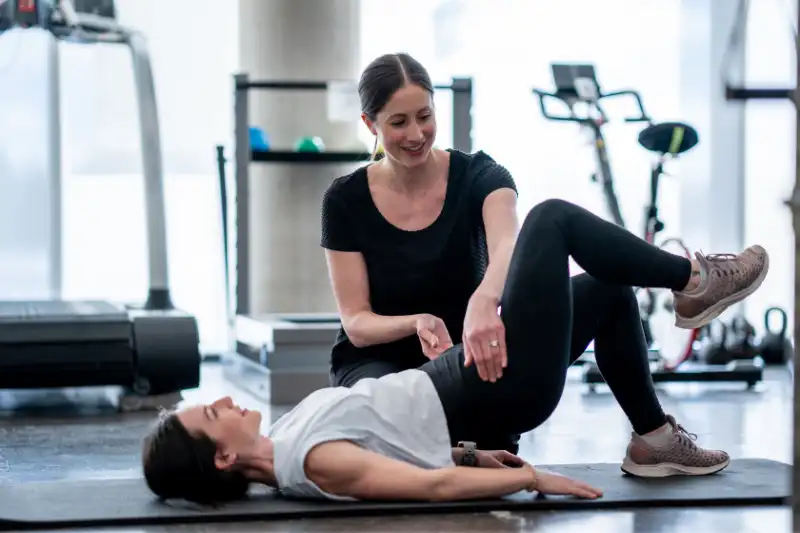Exercise for fitness differs from physio exercises. Although physiotherapy involves exercises, their purpose is different from activities used for fitness. When you exercise for fitness, you engage in activities that result in three primary outcomes. They include preserving physical fitness, mobility, and overall well-being. Physiotherapy uses a specific plan of exercises to treat an injury and return mobility, range of motion, and strength so that that injured body part is back to pre-injury condition.
Exercise For Fitness
Exercise for fitness follows three basic principles. They include overload, specificity, and reversibility. Here is a closer look at each:
Overload

The most effective way to build muscle strength and improve the cardiovascular system is by overloading with stresses that exceed the existing threshold of the body. This forces the body to adapt by getting stronger to meet the same demands in the future.
Specificity

Another tool used to either build muscle or increase cardiovascular capacity is to use a series of exercises that target specific areas to achieve desired outcomes. If the goal is to build larger biceps, several different arm exercises that focus on the biceps would be the best approach to take to reach that goal.
Reversibility

The most interesting aspect of exercise for fitness is that you must keep at it to experience gains. Whether those are gains in strength, overall fitness, or well-being, if you reach a level and quit your routine, your level of fitness will diminish by reversing to where you once were.
Physio Exercises

Although generally speaking, physio exercise is considered lightweight and somewhat effortless, the purpose of these exercises is not to exert stresses on body parts to make them stronger. The primary focus of physiotherapy is to target areas of need with exercises that treat the area through progression. The more mobility or range of motion that results from physio, the more strenuous the exercises become to increase that specific outcome.
In other words, physio uses a system where intensity and complexity increase as progress is made. The ultimate goal is to return an injury to pre-injury condition quickly and effectively which speeds healing. At first, the physio exercises are simple and uncomplicated, but as time passes and the injured region begins to respond positively to the exercises, physiotherapy adapts along the way creating greater challenges keeping the original pre-injury goal as the primary focal point.
The Confusing Part of Exercise for Fitness and Physio Exercises
Both forms of exercise are adaptable to address the progress and goals of the individual. While Pilates is not the same as weightlifting, there are similar principles to each including time, frequency, and intensity. However, the primary difference between exercise for fitness and physio exercise is why you would perform either.
Exercise for fitness is obviously for strength and to build a fit body and mind. Physio is primarily performed as a form of rehabilitation to treat an injury. When you compare them based on the question. “why are you doing it?” the confusion disappears as the difference between each type of exercise becomes very clear. Although they sit on two different ends of the spectrum, physiotherapy helps you get to the place where you can resume exercise for fitness so there is a complimentary component that ties these forms of exercise together.
Are You In Need Of Physio Exercises?
Turn to Newport Physio and Health for your physio exercise needs. From Pilates to other types of physiotherapy, the professional physiotherapists at Newport Physio and Health can create a program for you that will treat your injury and get you back to what you were doing before you got hurt. Find out how physio exercises can help with your rehabilitation by contacting Newport Physio and Health today.

